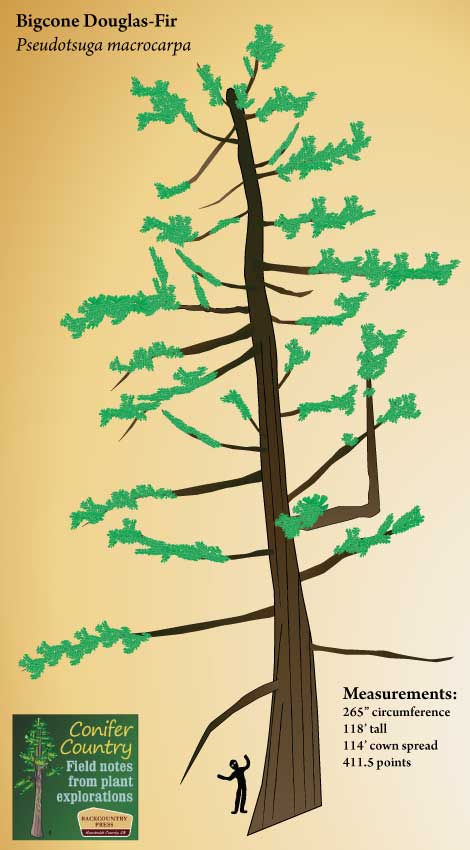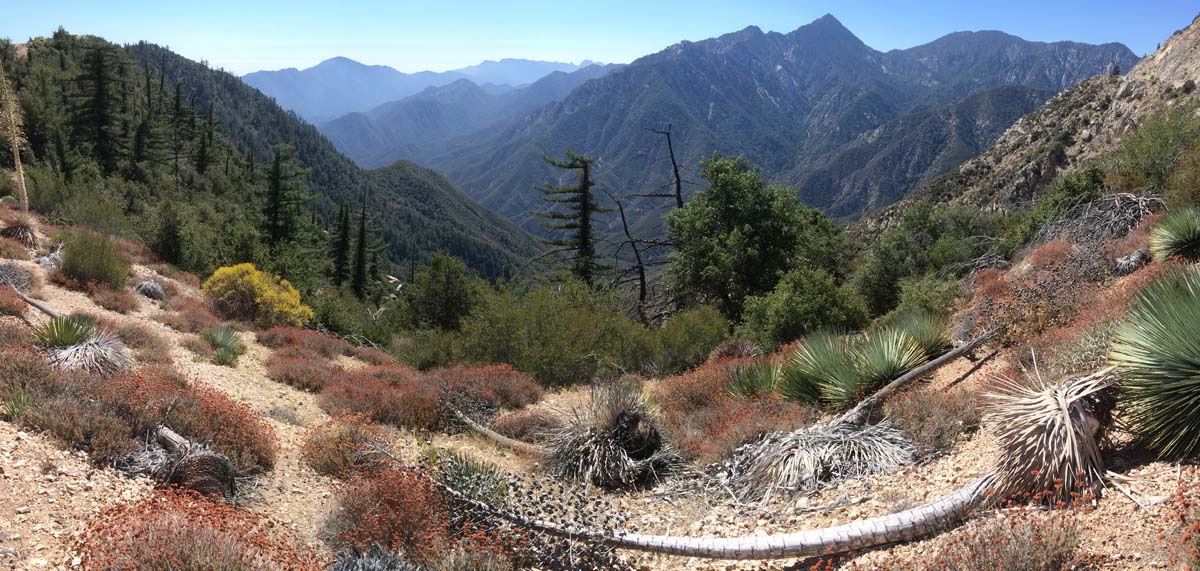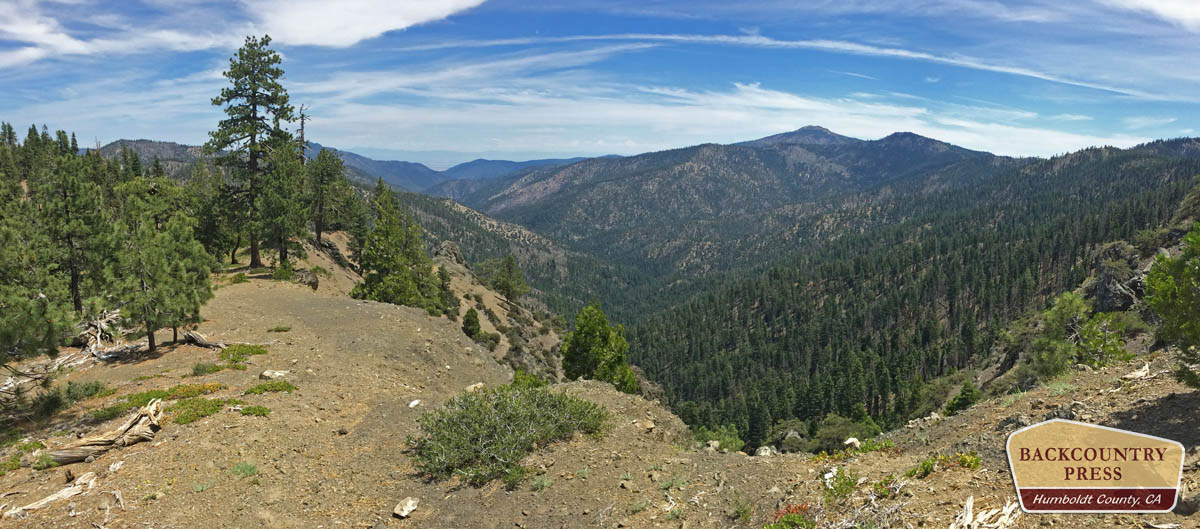Exploring the San Gabriel Mountains National Monument
In my search to understand Bigcone Douglas-fir (Pseudotsuga macrocarpa) within the Angeles National Forest, I found myself in secret canyons and along steep hillsides that few people have ever explored. I thus took it upon myself to document more than just our selected data plots for Bigcone. In previous posts, I’ve shared some of the large angiosperms I’ve run across. Here is the documentation of the second largest Pseudotsuga macrocarpa yet measured — a record Bigcone Douglas-fir.
This Bigcone was found on the edge of a wash called Holcomb Canyon within the Devil’s Punchbowl Natural Area. The tree is nearly as big around as the record specimen in Baldy Village but just not as tall. I have heard a rumor that the Baldy tree lost some of its crown — so I wonder if the numbers I have for this tree are still correct. Regardless, the tree in the Punchbowl is much more dramatic, being that it is within the Pleasant View Ridge Wilderness and not in the middle of town!




